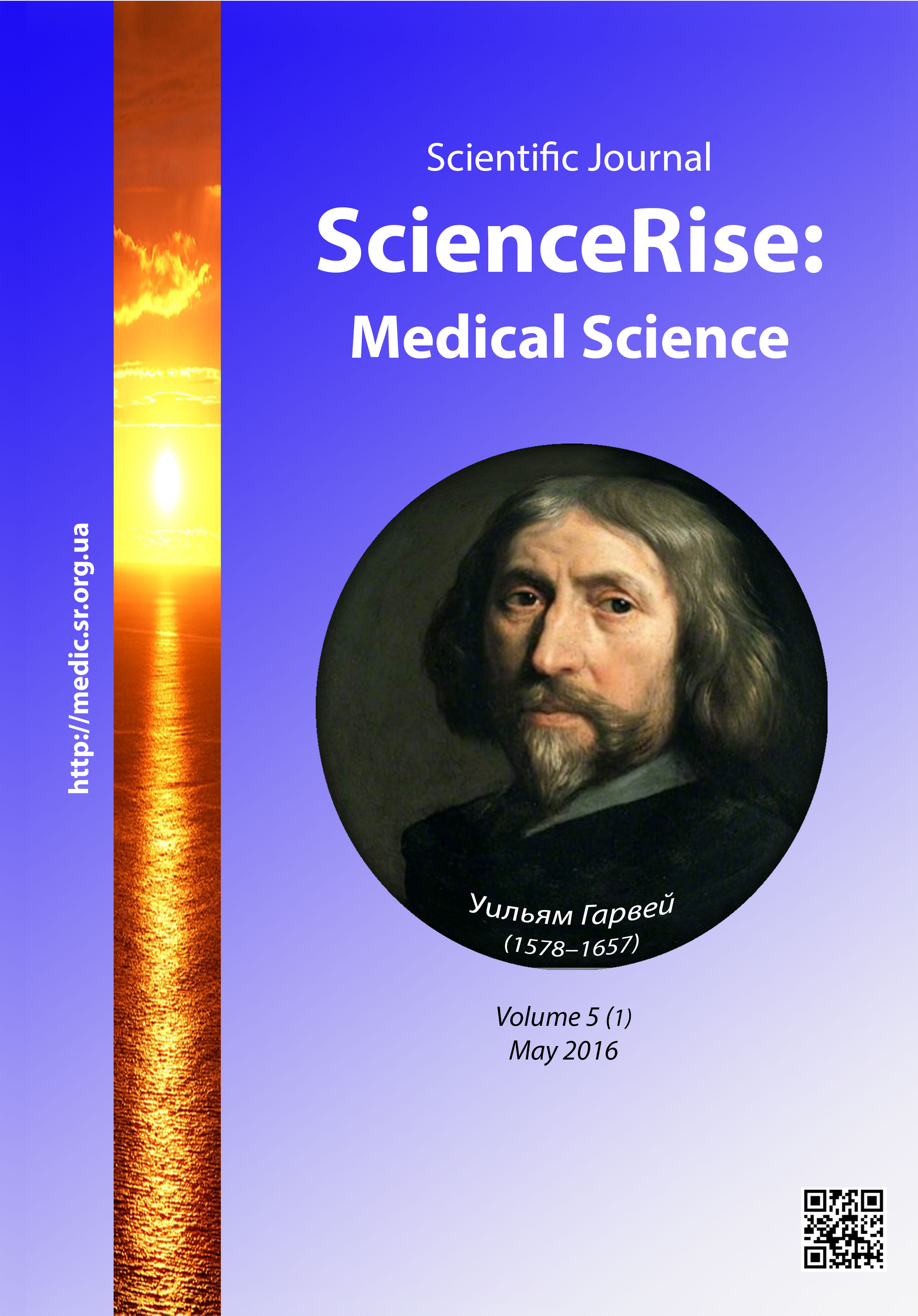Особливості перебігу ентеровірусної інфекції у дітей у Львівській області впродовж 2015 року
DOI:
https://doi.org/10.15587/2519-4798.2016.70130Ключові слова:
ентеровірусна інфекція, серозний менінгіт, герпангіна, екзантема, дітиАнотація
У статті представлено епідеміологічні та клінічні особливості ентеровірусної інфекції (ЕІ) у 305 дітей, які впродовж 2015 року лікувались у Львівській обласній інфекційній клінічній лікарні. Виявлено чітку літньо-осінню сезонність захворювання, найвищу захворюваність дітей віком до 4 років, превалювання форм ЕІ без ураження головного мозку, які восновному представлені герпангінами. Встановлено, що 19,09 % випадках серозні менінгіти спричинені вірусами ЕСНО-30 і Коксакі В1
Посилання
- Bogadel'nikov, I. V. (2009). Differencial'nyj diagnoz infekcionnyh boleznej u detej. Simferopol: Vpered, 689.
- Bogadel'nikov, I. V., Kramarjev, S. O., Chernyshova, L. I., Kubyshkin, A. V. (2008). Meningity u ditej. Klinika, diagnostyka, likuvannja. Lviv: Ms, 182.
- Demina, A. V., Shtejnberg, A. V. (2009). Jenterovirusy. Chast' 2. Jenterovirusnye infekcii: mnogoobrazie klinicheskih projavlenij. Bjulleten' SO RAMN, 6, 116–125.
- Kanaeva, O. I. (2014). Jenterovirusnaja infekcija: mnogoobrazie vozbuditelej i klinicheskih form. Infekcija i immunitet, 4 (1), 27–36. doi: 10.15789/2220-7619-2014-1-27-36
- Kramarev, S. O. (2003). Infekcijni hvoroby u ditej (klinichni lekcii'). Kyiv, 480.
- Abzug, M. J. (2014). The enteroviruses: Problems in need of treatments. Journal of Infection, 68, S108–S114. doi: 10.1016/j.jinf.2013.09.020
- De Crom, S. C. M., Rossen, J. W. A., van Furth, A. M., Obihara, C. C. (2016). Enterovirus and parechovirus infection in children: a brief overview. European Journal of Pediatrics. doi: 10.1007/s00431-016-2725-7
- Enterovirus and Human Parechovirus Surveillance – United States, 2009–2013 (2015). Centers for Disease Control and Prevention, 64 (34), 940–943. Available at: http://www.cdc.gov/mmwr/preview/mmwrhtml/mm6434a3.htm
- Pallansch, M. A., Oberste, M. S., Whitton, J. L.; Knipe, D. M., Howley, P. M. (Eds.) (2013). Enteroviruses: polioviruses, coxsackieviruses, echoviruses, and newer enteroviruses. Philadelphia, PA: Lippincott Williams and Wilkins, 490–530.
- Shaker, O. G., Abdelhamid, N. (2015). Detection of enteroviruses in pediatric patients with aseptic meningitis. Clinical Neurology and Neurosurgery, 129, 67–71. doi: 10.1016/j.clineuro.2014.12.004
##submission.downloads##
Опубліковано
Як цитувати
Номер
Розділ
Ліцензія
Авторське право (c) 2016 Галина Орестівна Литвин, Олена Ярославівна Хомин

Ця робота ліцензується відповідно до Creative Commons Attribution 4.0 International License.
Наше видання використовує положення про авторські права Creative Commons CC BY для журналів відкритого доступу.
Автори, які публікуються у цьому журналі, погоджуються з наступними умовами:
1. Автори залишають за собою право на авторство своєї роботи та передають журналу право першої публікації цієї роботи на умовах ліцензії Creative Commons CC BY, котра дозволяє іншим особам вільно розповсюджувати опубліковану роботу з обов'язковим посиланням на авторів оригінальної роботи та першу публікацію роботи у цьому журналі.
2. Автори мають право укладати самостійні додаткові угоди щодо неексклюзивного розповсюдження роботи у тому вигляді, в якому вона була опублікована цим журналом (наприклад, розміщувати роботу в електронному сховищі установи або публікувати у складі монографії), за умови збереження посилання на першу публікацію роботи у цьому журналі.










